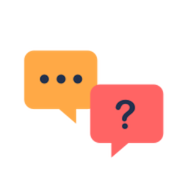
Powered By





By now, you’ve likely heard of glucagon-like peptide 1 (GLP-1) agonists — commonly called GLP-1 drugs. These medications were originally created to treat type 2 diabetes, but today, they’re also widely used to support weight management in people living with obesity.
Like most medications, GLP-1 drugs can cause side effects. If you’re taking a GLP-1 drug as a treatment for obesity, you may already be aware of this. What you might not know is that choosing the right foods can help ease side effects while supporting your health goals. Following what some call an Ozempic diet — a way of eating that works with the medication — can make a real difference in how you feel.
This article explains how GLP-1 drugs affect the digestive system, which foods to avoid because they may trigger side effects, and what to eat to help you feel your best while taking GLP-1 medications.
GLP-1 medications help regulate blood glucose (sugar) levels. They do this by mimicking the GLP-1 hormone that’s produced by the small intestine. After you eat, the GLP-1 hormone helps manage digestion and blood sugar by:
GLP-1 receptor agonists work by taking on the roles of the natural GLP-1 hormone. Because they help you feel full longer and reduce appetite, many people taking GLP-1 drugs eat less and lose weight.
GLP-1 drugs help slow digestion, which aids in controlling blood sugar levels. But when the stomach empties more slowly, some foods — especially those that are harder to digest — may lead to uncomfortable symptoms.
An estimated 40 percent to 85 percent of people taking GLP-1 medications experience side effects. The most common side effects are gastrointestinal (digestive), including:
Nausea is the most commonly reported side effect, especially during the first few weeks after starting a GLP-1 medication.
In rare cases, GLP-1 drugs have been linked to more serious gastrointestinal side effects, including pancreatitis (inflammation of the pancreas) and bowel obstruction (a blockage in the intestine). If you develop severe or persistent symptoms, tell your healthcare provider right away.
If you’re taking a GLP-1 drug, being more mindful of what you eat may help reduce side effects. Certain types of food are more likely to trigger symptoms like nausea, bloating, or heartburn, especially as your stomach empties more slowly. These foods include:
GLP-1 drugs slow down how quickly food leaves your stomach. This process is called delayed gastric emptying. When greasy or high-fat foods linger in the stomach, they can increase the chances of nausea, acid reflux, and bloating. At the same time, eating too little fiber may lead to constipation.
Everyone responds differently to foods while taking GLP-1 medications, and what bothers one person may be fine for another. Try to pay attention to how your body reacts and adjust your diet plan accordingly.
A well-balanced diet for GLP-1 drugs focuses on nutrient-dense foods that are easy to digest and support your health goals. Choosing the right foods can help minimize side effects while ensuring you get the nutrition your body needs. When planning meals and snacks while taking semaglutide (Wegovy), liraglutide (Saxenda), or another GLP-1 drug, try to include more of the foods and drinks discussed below.
Protein helps preserve muscle mass during weight loss, keeps you feeling satisfied, and supports stable blood sugar levels. Good protein sources include:
Whole grains, fruits, and vegetables are all great sources of fiber, which helps prevent constipation, a common GLP-1 side effect. These foods can also make you feel full longer to prevent overeating. High-fiber options such as:
Staying hydrated is important, especially if you have digestive symptoms such as nausea and constipation. Try to drink at least 8 cups a day of water or sugar-free beverages like herbal tea. Water-rich foods such as soups or fruits and vegetables — like watermelon and cucumber — can help you stay hydrated and are gentle on your stomach.
Although high-fat foods can trigger side effects, your body still needs some healthy fats. Incorporating small amounts of avocado, nuts and seeds, olive oil, and fatty fish like salmon can help support heart health and other bodily functions.
If you’re experiencing side effects from a GLP-1 medication, some dietary changes may help you feel better. These tips can help reduce digestive symptoms like nausea, bloating, and constipation.
Eating a balanced diet of nutrient-rich, easy-to-digest foods can help prevent unpleasant symptoms. Choose bland, low-fat foods, and use cooking methods such as baking, steaming, or grilling to keep fat content low. Make sure to get enough protein — this nutrient helps regulate blood sugar, supports muscle health, and keeps you feeling full longer.
Fiber is key to preventing constipation, but introduce it gradually. A sudden increase can cause gas or diarrhea. If you’re already experiencing diarrhea, your doctor may suggest cutting back on high-fiber foods temporarily.
Reducing portion sizes is another easy way to help ease symptoms like nausea and bloating. Try eating several smaller meals instead of three large ones a day. Eat slowly and without distractions to give your body time to register fullness.
Listen to your hunger and fullness cues — stop eating when you feel satisfied, and aim to eat only when you’re truly hungry.
The timing of your meals can affect how you feel. To reduce the risk of stomach upset:
Drinking enough fluids is important, especially if you have diarrhea or less appetite. Sip clear, hydrating drinks like water or broth throughout the day. For easier hydration, try:
If you’re having trouble eating enough, meal replacement shakes may help you get the nutrients you need. If possible, make your own by blending natural ingredients like yogurt or almond milk, fruit, and a small amount of nuts or unsweetened nut butter.
In addition to your doctor, a registered dietitian can help you create a meal plan tailored to your needs. They can guide you in choosing foods that support your health, meet your nutrition goals, and minimize side effects from GLP-1 drugs.
On MyObesityTeam, people share their experiences with obesity, get advice, and find support from others who understand.
While taking a GLP-1 drug, have you noticed side effects caused by eating specific foods? Let others know in the comments below.
Get updates directly to your inbox.



 Continue with Facebook
Sign up with your email
Continue with Facebook
Sign up with your email
Become a member to get even more




A MyObesityTeam Member
Although I'm not a diabetic, but this was really interesting to know Especially if you have family members who are experiencing some of these things and they have diabetes.
We'd love to hear from you! Please share your name and email to post and read comments.
You'll also get the latest articles directly to your inbox.